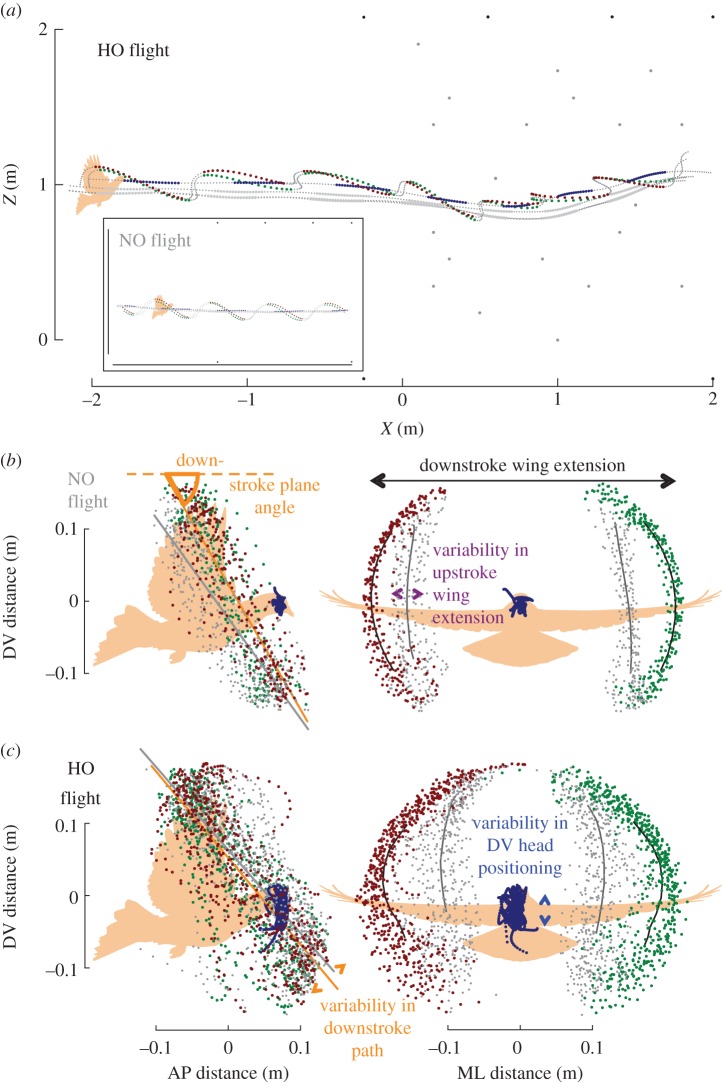Figure 5.
Horizontal obstacle (HO) manoeuvring is associated with changes in wing stroke trajectories and wing extension, as well as increased head movements. (a) Lateral view of a representative HO flight (same trial as figure 1d) as the pigeon approaches and then flies through the HO forest (20 grey circles semi-randomly distributed at right). Wing stroke patterns (left, green; right, red) are stereotypic during downstroke (larger, coloured symbols) and upstroke (smaller, grey symbols) as the pigeon approaches, but exhibit variable paths to navigate between obstacles and to avoid obstacle contacts. Positions of the head during downstroke (large blue symbols) and upstroke (small grey symbols) are shown relative to the three body markers (grey points) and are, not surprisingly, less variable in their trajectory than the motions of the bird's wings. Wing and body motions during NO flight (lower left inset) are highly regular in pattern, similar to those observed during the approach section to the obstacle field in the HO flight. (b,c) Lateral and frontal views of the left (green) and right (red) wing trajectories relative to the body, together with head positions (blue), follow more regular movement patterns during NO flight (b) compared with flight in the HO forest (c). Regressions of wing paths during downstroke (orange) and upstroke (grey) document wing stroke plane angles relative to the anteroposterior body axis (orange arc, left panel for the downstroke plane angle). The stroke plane angles for both the downstroke and upstroke are lower in the forest, compared with NO flights, for the represented individual and across individuals (table 1). The reduced stroke plane angles are caused by more anteriorly swept wings during downstroke. The pigeons also reduce their wingspan in the obstacle forest, both during downstroke and upstroke (shown for downstroke in frontal view). Furthermore, HO manoeuvres are associated with more variable wing extension ((b), right panel) and stroke paths ((c), left panel), as well as a more variable head positioning along the dorsoventral body axis ((c), right panel). (a-c) Pigeon silhouettes are approximately to scale.

